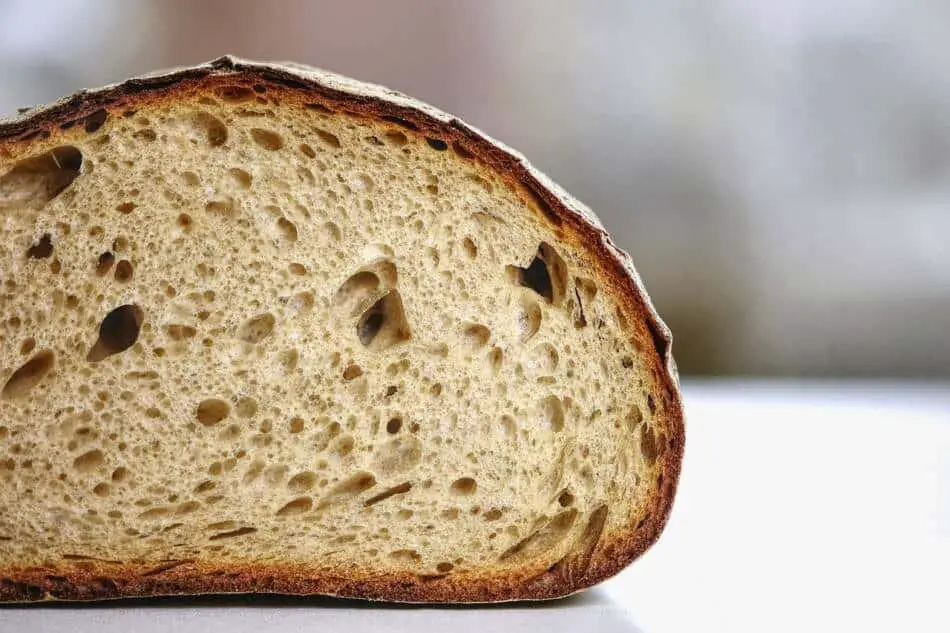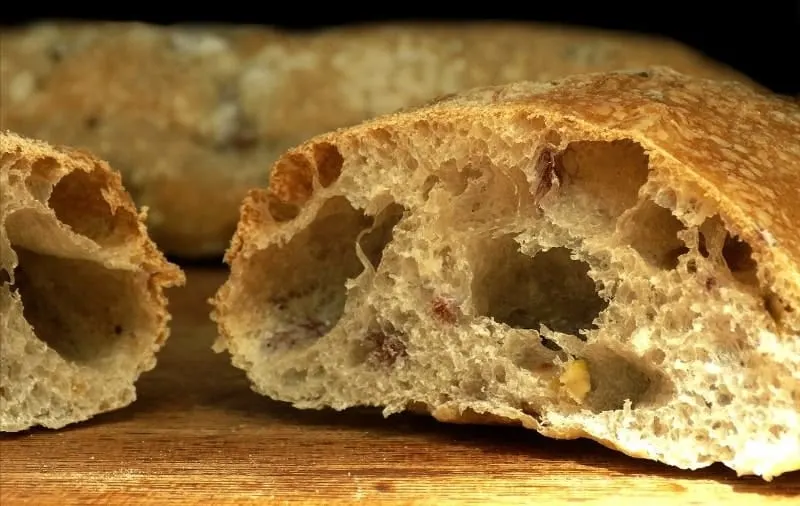Air Bubbles in Bread Are Caused by What Process
The dough is always a bit too wet and too sticky to handle during the transfer process into the tins but taste is nice so far. Which of the following is an electroncarrier that plays a role in cellular respiration.

Why Do I Have Big Holes In My Bread And How To Prevent It The Bread Guide The Ultimate Source For Home Bread Baking
The primary cause of large holes in your bread is CO2 bubbles being trapped in the dough.

. 13 Hyperhydrophobicity of the waterair interface as the basis of flotation as a separation method. Therefore as the cooling progresses the resin at the center portion is expanded toward the. Sounds like youre overworking the dough and degassing it in the process.
This will get unwanted large air bubbles or air pockets out. I was just letting them know. Yeast may be best known as the agent in bread that makes it rise.
If you want to avoid getting these holes you need to get rid of these bubbles during the final shaping process by knocking or rolling them out. The starter as mentioned earlier has a bubbly aspect and will continue to make bubbles as the dough rises through the fermentation process. In many bread recipes you mix in the yeast and let the dough rise as the yeast produces gas bubbles.
The air bubbles and spongy texture of bread are due to which process. Air bubbles trapped inside the dough cause holes in the baked bread. When you add yeast to your flour and water mixture it breaks down the large starch molecules into simple sugars.
The air bubbles and spongy texture of bread are due to which process. Gas bubbles are also believed to be trapped within the dry flour particles as they are added during mixing. March 9 2020.
The introduction of air bubbles near the bottom of a vessel filled with water causes the air bubbles to rise to the top of the water column and in so doing presents a rather large hydrophobic surface area formed by. Gram numbers are round with my scale. Punching down the dough then turning it out onto a work surface and kneading it briefly will remove large bubbles.
The Krebs cycle produces. Holes will often appear if you have to much oil or flour getting incorporated into your final shaping process what is happening is that if the dough is being kept apart by smears of oil or over generous amounts of flour on the bench during the moulding process this allows the gas and steam to form a reservoir in the loaf which results in a large gas hole. No real explanation was given and they offered to reimburse me but I wasnt interested in that.
November 20 2019 by Jackie. The air bubbles and spongy texture of bread are due to which process. According to the cause of air bubbles or vacuum voids the solutions to the defects are described as below.
Then you punch it down which means that you squeeze the bubbles out and let it rise again. The water will bring those gluten molecules together and it will ensure the bread becomes soft. 1 When the wall thickness of the product is large the outer surface is cooled down faster than the center portion.
The gluten in flour help a yeast risen bread to become nice and airy and hold onto air inside the dough. Same goes for oil as it too can capture air inside the loaf when molding your loaf. The air bubbles and spongy texture of bread are due to which process.
Cellular respiration uses 1 molecule of glucose to produce approximately. Yeast reacts with sugar causing it to ferment. Last but not least the yeast will contribute to the flavour and it will form gas which will create the desired air bubbles in bread.
The irony is that now I. I talked with the local Natures Own bakery and they were very nice about it. During this process the yeast creates carbon dioxide and ethyl alcohol which makes the air bubbles that causes the bread dough to grow.
The Krebs cycle c. The air bubbles and spongy texture of bread are due to which process General. As the bread bakes the bubbles set and give the bread its light airiness.
When shaping your loaf dont be afraid to be more aggressive with it and give it a good slap on the table. Yes and Ive complained about it in the past. When given food in the form of sugar and left to rise in a warm environment yeast forms air bubbles within the bread dough giving it a.
The gas released by yeast CO2 creates bubbles as the bubbles expand in the dough the bread rises. Try not oiling your dough. The fermentation then results in the production of carbon dioxide.
Then because the gluten strands arent doing their job gas rises through the dough and collects just under the crust forming those large bubbles. But in order for these bubbles or air pockets to take place as desired the kneading of the dough should be kept at a minimum. In the bread world burping isnt rudethe yeast is.
Then youre probably over-proofing as well waiting for it to rise back up. The carbon dioxide gets trapped in bread dough and becomes little air bubbles responsible for making bread rise. In a process called fermentation the yeast feasts on any sugar in the bread dough and then burps.
Now why would you do that. These bubbles enlarge during the proofing of. You see when the dough is kneaded gluten binds are formed.
Bread flour 8125 Whole-rye flour 1875 Water 500 Levin 5625 Salt 2375 Total Bread formular 10625 Whole-rye flour 1875 Water 8125 Salt 2375 Units. Carel Jan van Oss in Interface Science and Technology 2008. Answer 1 of 4.
1478 students attemted this. Air bubbles which form from the expanding carbon dioxide during the first rise must be eliminated or made smaller.

Ultimate Guide To Achieving The Perfect Rise In Sourdough Bread Crusty Labs

Causes Of Large Uneven Holes In Bread And How To Avoid Them Food To Impress

Bubbles In Bread It S Just Air But It Matters The Straits Times
Comments
Post a Comment